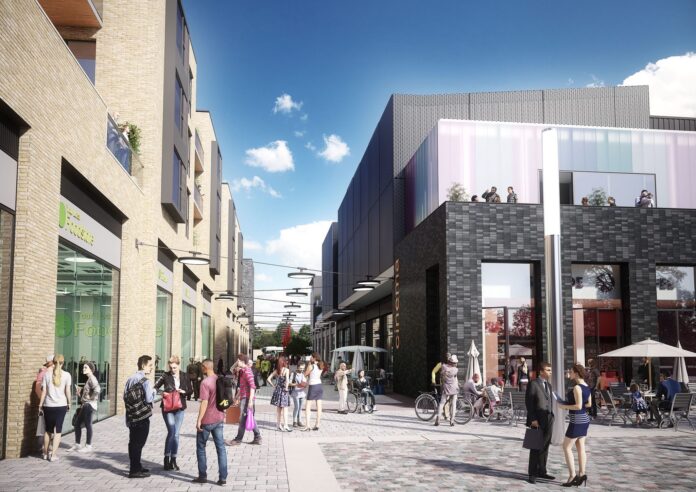The Whitehill & Bordon Regeneration Company (WBRC), a joint venture between real-estate investment firm Dorchester Regeneration and house-building company Taylor Wimpey, has appointed local system integrator Electronic Media Services (EMS) to install a private LTE network at its new community development project at the former Prince Philip barracks in Whitehill & Bordon in Hampshire, in the UK.
EMS has acquired shared spectrum licences from UK regulator Ofcom to enable WBRC to use publicly licensed spectrum at 1800 MHz, 2.1 GHz, and 2.6 GHz in the vicinity of the new town centre. The spectrum holdings, licensed nationally to the major UK operators, have been effectively sublet in the locale via Ofcom’s new shared spectrum policy – which compels EE, Vodafone, O2 (Telefónica) and Three (Hutchison) to ‘share’ under-utilised local spectrum.
The frequencies are not being used locally by the UK operators, Enterprise IoT Insights understands, on the grounds the new Whitehill & Bordon site is a new £1 billion ‘smart-city’ development on the former Prince Philip barracks in the town, near to Guildford, which is set to transform 100 hectares of old garrison-town into a “green, healthy and connected town… with… state-of-the-art technology”.
The project, already letting homes and workspaces, is to be finished in 2036, when 3,350 new homes and 5,500 new jobs will be created. EMS has already deployed a “self-contained” private-LTE network at the venue. It has used a core network from Italian private networking outfit Athonet, along with LTE base stations with remote radio heads and LTE push-to-talk (PTT) software for dispatch operation for WBRC.
Athonet software in the back-office means EMS can create SIMs and ‘authentication devices’ on the network for the pair. The core network hardware and software have been installed in a municipal site in the town centre. The remote radio heads (small cells) have been installed on existing poles in the town centre to provide indoor and outdoor coverage; small cells have also been deployed at the Bordon & Oakhanger Sports Club and Hogmoor Café.
The installed solution is upgradeable to support 5G, said Athonet. The new Whitehill & Bordon development is the biggest-ever planning application granted in Hampshire. A statement said: “This is a completely private mobile network that operates separately to the public mobile networks, and offers WBRC its own reliable and secure network.”
It continued: “A key element of the WBRC project was its ‘digital’ plans for the Army Barracks development. WBRC wanted to capitalise on the growth of digital technologies and businesses associated with data capture, analysis, monitoring and management, especially in relation to smart transport and intelligent systems for energy, health, and home management as these support the town’s sustainable regeneration.”
Andrew Lambert, chief executive at EMS, commented: “The solution provides the flexibility and growth path to support 5G and massive IoT as the new town centre grows and creates demand for new innovative services that rely on fast digital connectivity.”

